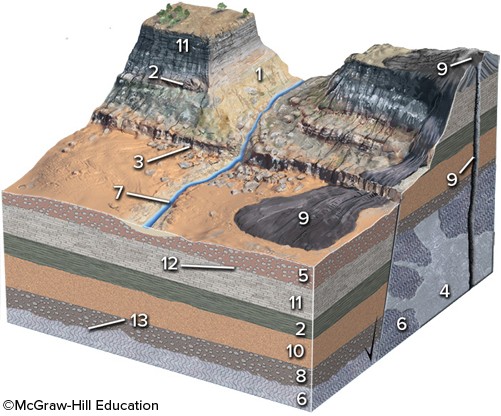Of the following numbered units, which is the youngest?
A. unit 6
B. unit 4
C. unit 11
D. unit 5
E. unit 9
Answer: E
You might also like to view...
If an area has shallow, intermediate, and deep earthquakes, what can you infer about the area?
A) It is near a subduction zone. B) The shallow earthquakes will be closer to the trench than deeper ones. C) The depth pattern of earthquakes can be used to determine which way the slab is inclined. D) This area has the potential for large earthquakes. E) All of these are correct.
A chemical or biogenic sedimentary rock consisting of halite is called
A) limestone. B) rock salt. C) chert. D) dolostone.
Over a large area, the motion of the atmosphere is primarily ________. Why?
(A) vertical (B) horizontal (C) We do not know.
The trickling-filter system and the activated-sludge system both require
A) high levels of oxygen to promote aerobic decomposition. B) high levels of carbon dioxide to adjust the pH of the water for bacterial action. C) the addition of large amounts of chlorine to kill pathogens. D) the addition of large amounts of ammonia as nutrients to support decomposers.